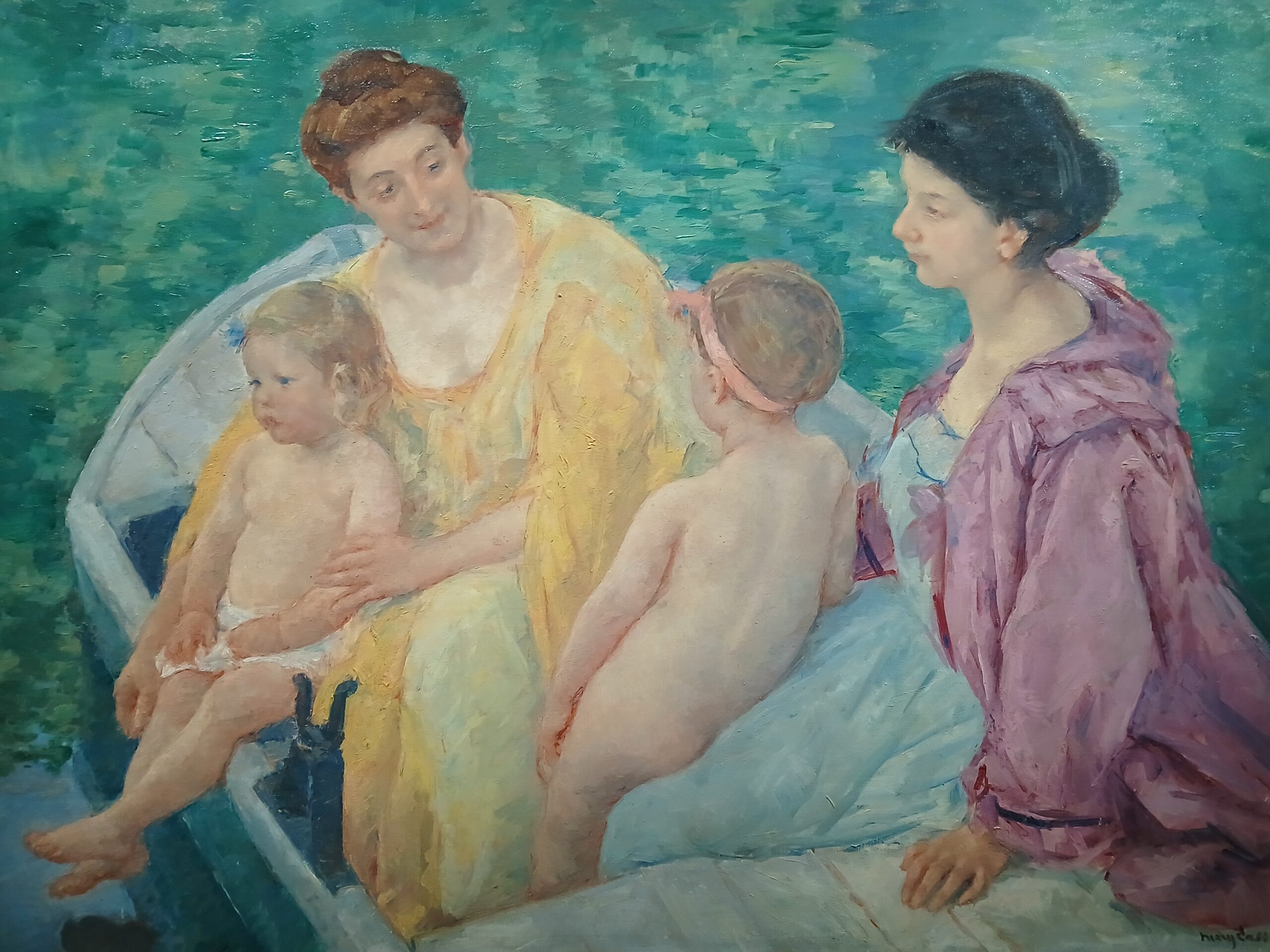
Impressionism was born in Paris in the spring of 1874, and as Marie Bracquemond declared, it was ‘as though all at once a window opens and the sun and air enter your house in torrents.’ This summer, the National Gallery’s Women Impressionists exhibition, curated by Janet McLean and Dorthe Vangsgaard Nielsen, offers a rebirth on the movement’s 150th birthday. The exhibition refines and foregrounds the vibrant, intimate, and complex lives of Berthe Morisot, Mary Cassatt, Eva Gonzalès and Marie Bracquemond, four women artists at the heart of the Impressionist movement.
Berthe Morisot was the only woman to be featured in the First Impressionist Exhibition of 1874, an attempt to garner recognition for the new Impressionist style and to challenge the established artistic customs of the Salon. Ambitious and experimental, Morisot thrived at the epicentre of the movement. Monet and Renoir were part of her artistic circle, and her husband Eugène Manet was an acclaimed painter in his own right as well as a steadfast supporter of Morisot’s creative endeavours. Marriage and motherhood did little to stifle her artistic career, as she explored the lives of modern women and the intimacies of her own family life through the canvas. Mother, husband and child were often depicted in meadows and gardens, a lush Edenic outdoors imbued with domesticity. Lively brushstrokes illuminate vivid scenes, and in many paintings Morisot leaves areas of the canvas’s borders unpainted, capturing the transience of fleeting landscapes and the complexity of human characters, forever blurry at the edges.
Despite her artistic prowess, Morisot found no relief in her work. Her great-grandson, Jean-Marie Rouart, wrote that Morisot was ‘a suffering, wounded soul that no compliment nor degree of success could reassure.’ Mary Cassatt, the second artist to make an appearance in Women Impressionists, strikes a great contrast. Indomitably self-assured, Cassatt was born in Pennsylvania to an upper-middle class family and travelled widely in Europe, absorbing its art, music, and languages. She settled in Paris and earned an invitation by Edgar Degas to exhibit with the Impressionists in 1879. Capturing the lives of women in a modern world, in particular her sister Lydia, became her artistic motive. Cassatt’s work is refreshing and spirited, truthfully and joyously depicting women as they existed and thrived in a new modernity. An inventive and innovative artist, she produced monochrome prints depicting Parisian women in the style of the Japanese ukiyo-e tradition after witnessing an exhibition of Japanese woodblock prints at the Beaux Arts. Wealthy and unmarried, she enjoyed tremendous commercial success, finding great joy in her artistic career; ‘Oh, I am independent! I can live alone, and I love to work.’
While Morisot and Cassatt dominate Women Impressionists, Eva Gonzalès plays a supporting role with much fewer of her works on display. An artist who resided on the outskirts of the movement, she never exhibited with the Impressionists even though she had been the pupil of Édouard Manet. Her death at only 33, giving birth to her son, tragically cut short a budding career.
Our final artist, Marie Bracquemond, seems quite at risk of becoming a footnote to this exhibition. Only five of her works are on display, though her oeuvre is relatively small–a consequence of her time-consuming, meticulous painting process. Her modest upbringing, even more, stands in opposition to the affluent lives of these other women. Hemmed in by a world resistant to women artists, her tutor Jean-Auguste-Dominique Ingres ‘doubted the courage and perseverance of a woman in the field of painting’ and her father consistently undermined her artistic ambitions. Bracquemond abandoned art later in life. Women Impressionists excellently opposes the vivacity and immediacy of these artworks against a wall painted dull grey–a perpetual contest between an expansive creative potential and the stark reality of the dreary limitations facing artistic women at the dawn of Impressionism. Morisot’s final words to her daughter perhaps captured this struggle best: ‘You have looks and money. Use them well.’
The exhibition is as much a portrayal of absence as it is a celebration of these four artists. Who isn’t on these walls? What artworks may have filled the empty grey spaces on these walls, if the life of an artist was not endowed only to women with status and support? ‘I don’t think there has ever been a man who treated a woman as an equal and that’s all I would have asked for,’ Morisot pleaded, ‘for I know I’m worth as much as they’. Women Impressionists offers a poignant commemoration of these women’s artistic worth, taking them out of the dusty shadows and into a colourful, clarifying light.
‘Women Impressionists’ runs until October 6th. Tickets from €5, or free on Wednesday mornings






